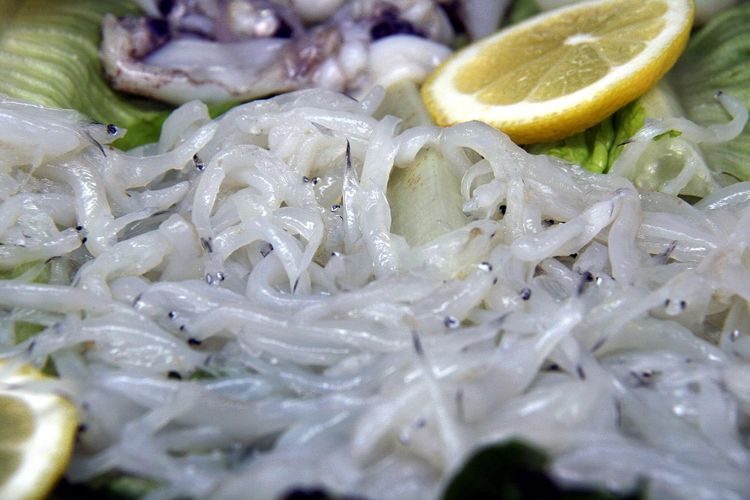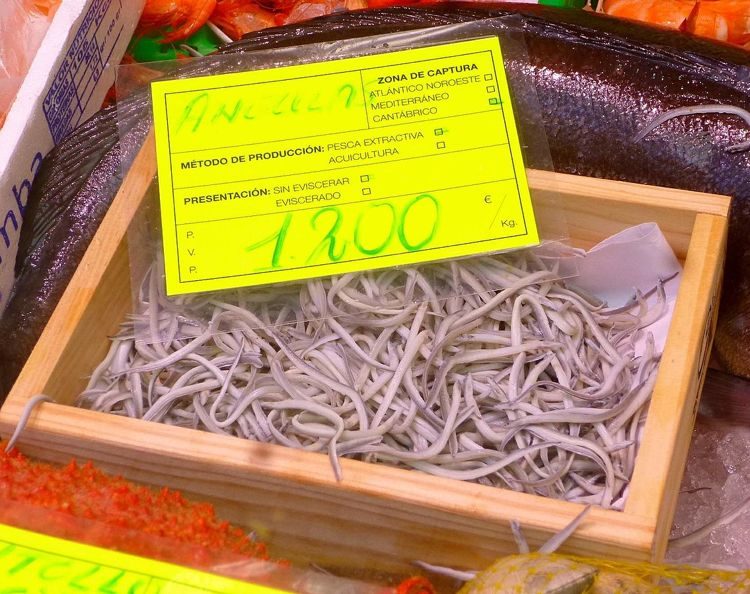Angulas, the Spanish word for baby eels is one of Spain’s most expensive foods, but no one seems to understand why. They hardly have any taste at all, their texture is best described as slimy and they look like limp worms on a plate. So why are people paying hundreds of euros to eat angulas at expensive restaurants?
Legend has it that in the past angulas were used as fodder for chickens and pigs, and there is historical evidence that they were once a staple food of the working class in northern Spain. But today they sell for astronomical prices of up to 1,000 euros ($1,150) per kilo, so only the richest of the rich can afford them. So what happened? Well, scarcity definitely played a big part in their surprising transformation. River dams, the general degradation of the environment and overfishing have seriously affected the baby eel population, and the rarer they got the more expensive they became. They may not taste like anything, but apparently many people like to act like snobs every once in a while, so they pay a premium to enjoy a food that most people can’t afford.

Photo: Tamorlan/Wikimedia Commons (CC BY 3.0)
“I would not pay so much for them, they have no flavor or color, nothing, they do not even smell, a lettuce has more aroma, but we had two men here who ordered half a kilo, five hundred euros at a time, some people with money like to spend it. Who does not like to be a snob once in a while?” Rodrigo García Fonseca, the head chef of a well-known Basque restaurant in Madrid, told the BBC.
But if you thought 1,000 euro per kilo was expensive for a bunch of slimy eels, wait until you hear what the first batch of the year goes for. In 2016, the first batch of eels sold for a whopping 5,500 euros ($6,300) per kilogram, while the second batch went for “only” 1,030 euros. Interestingly, they were both bought by the same person, the owner of a restaurant, who said paying a much higher price for the first lot was worth it as promotion for his business.

Photo: Zarateman/Wikimedia Commons
“It was a bit of marketing for my restaurant, as well as a tribute to the fisherman,” José Gonzalo Hevia said. “The atmosphere at the auction is very exciting, it’s a big media event,and the next day, the name of my restaurant was in all the newspapers and on all the television channels. Some of my clients came back 20 or 30 times in a season to eat eels.”
To get an idea of how bland angulas taste, the most popular recipe involves frying garlic and hot peppers in lots of olive oil and then adding the baby eel to give them some flavor. And yet rich people can’t get enough of them. They are so popular that there is even a thriving black market for angulas in Spain.
“When I was young, in the 1950s and 60s, we ate a lot of angulas. At that time, they were still considered too low class for a restaurant to serve, but in the ‘70s, the great Basque restaurants like Arzak started to cook with them, and all of a sudden, angulas were high class,” award-winning food writer and historian Manolo González told the BBC.
“Exclusivity has always played a role in gastronomy,” González added.






